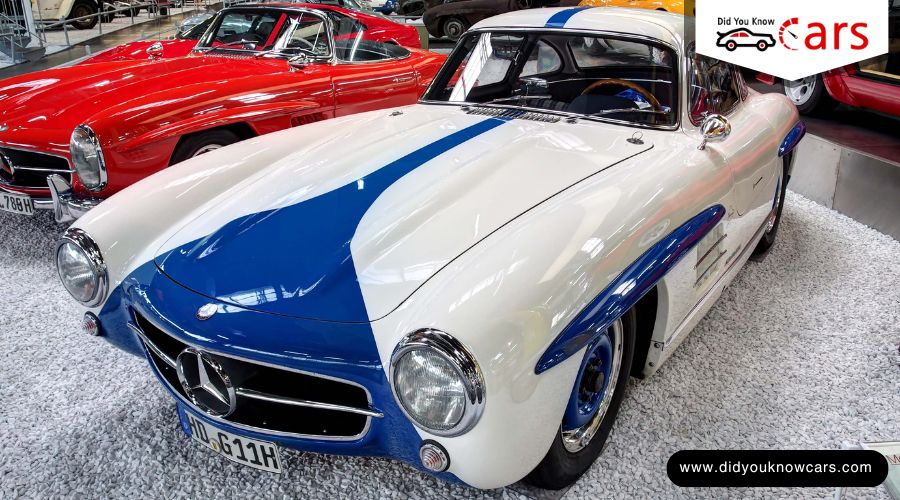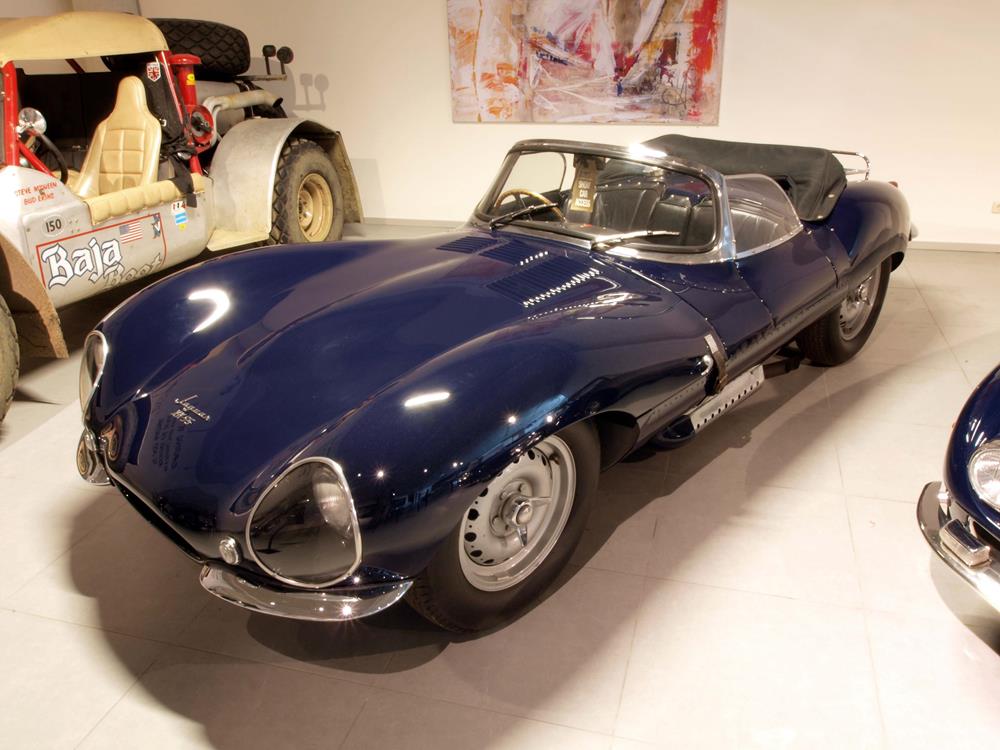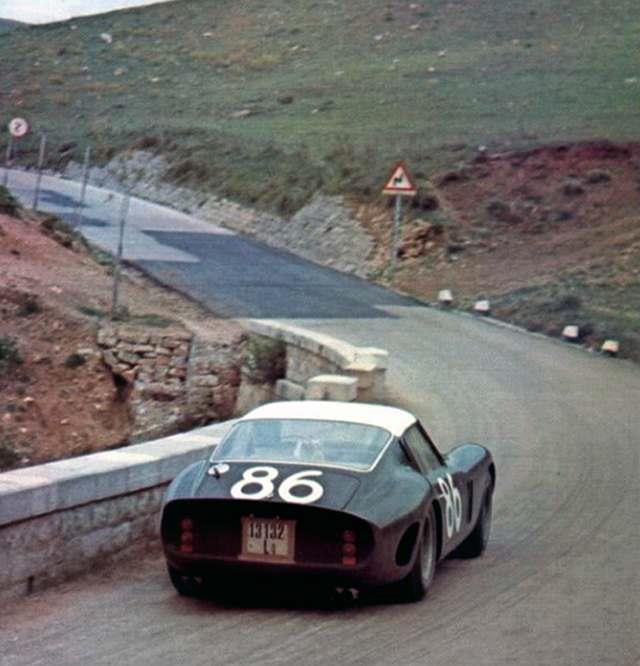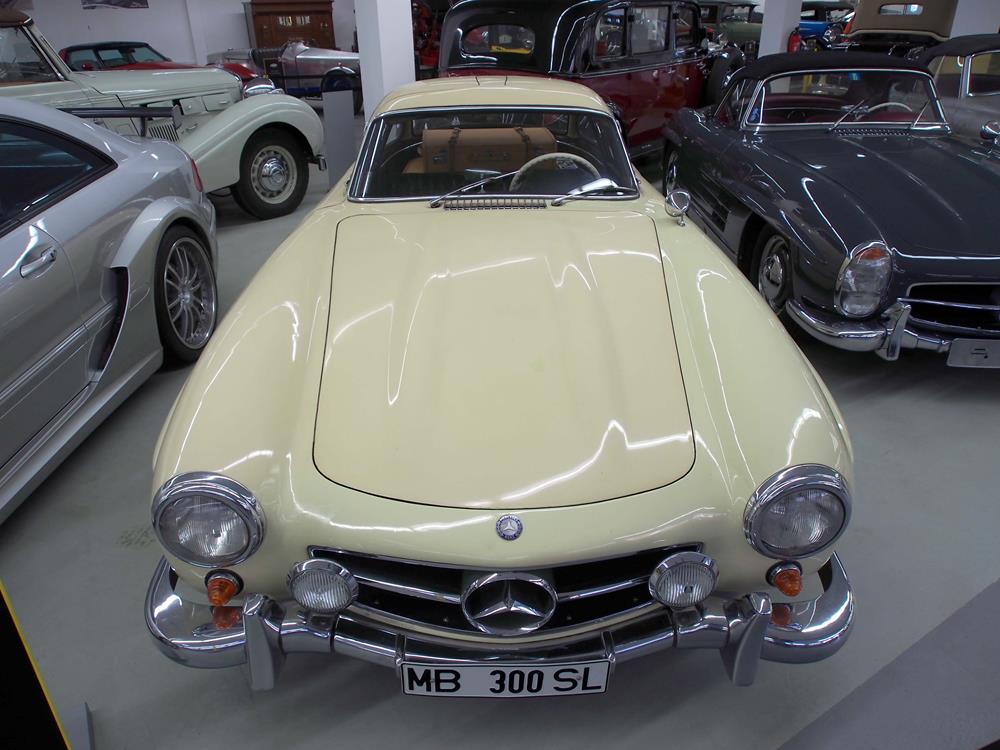In the world of cars, rarity, and exclusivity often go hand in hand with astonishing price tags and unparalleled allure. Some cars, by virtue of their limited production, historical significance, or groundbreaking design, become legends on wheels. This exclusive list is dedicated to such rare gems –cars that are not just vehicles but rolling pieces of art, engineering marvels, and symbols of a bygone era.
Here are some of the rarest cars in the world:
Bugatti Type 41 Royale Kellner Coupe
The Bugatti Type 41 Royale Kellner Coupe, produced between 1927 and 1933, was envisioned by none other than Ettore Bugatti. Designed to appeal to royalty, it was both massive in size and ambitiously elegant. With a length surpassing 6 meters and powered by a colossal 12.7-liter straight-eight engine, the Royale was among the largest cars ever constructed. It delivered a powerful punch with up to 300 horsepower, housed in a chassis that featured extravagant details such as a walnut-covered steering wheel and knobs made from whalebone.
Bugatti’s original plan was to build 25 of these majestic vehicles, but its production was deeply affected by the Great Depression. Only six were made, and each of them comes with a distinct body. Despite Bugatti’s hopes, no royals became the owners of these cars. Each vehicle had its tale to tell, like the prototype that met its end in an accident or others that were kept within the Bugatti family or sold to discerning collectors.
One particularly intriguing story is that of the Kellner-bodied Royale, chassis number 41141. After World War II, it was sold by Bugatti to American racing driver Briggs Cunningham for $3000 and two GE refrigerators – a significant trade at a time when refrigerators were rare in France. This same car later reached a staggering $9.7 million at a Christie’s auction in 1987. Today, while most of these Royales are displayed in museums, the Kellner Coupe remains in private ownership, its current owner shrouded in mystery.
1957 Jaguar XKSS
The 1957 Jaguar XKSS is a captivating blend of speed and elegance. After Jaguar’s withdrawal from racing at the end of the 1956 season, they were left with several unsold D-types. In a savvy business move, Sir William Lyons decided to convert these into road-going cars, targeting the American market, which had a growing appetite for high-performance European sports cars. The conversion included adding a passenger side door, a full-width windscreen, side screens, and a fabric roof for weather protection, transforming the D-type into the more refined XKSS.
Initially, 25 XKSS models were planned, but fate intervened. A fire at the Browns Lane factory in February 1957 destroyed nine of the cars, leaving only 16. These cars are not just rare but steeped in history. In 2016, Jaguar decided to complete the original production run by hand-building the remaining nine XKSS roadsters to the exact specifications of the original models, which sold for around $1.25 million each.
One of the most famous XKSS owners was the legendary actor and racing enthusiast Steve McQueen, who purchased chassis No. 713 in 1958 for $5,000. This car, also known as the “Green Rat,” was originally off-white with a red interior but was later repainted by McQueen in British Racing Green. McQueen’s love for this car was evident – he drove it regularly, making it a part of his iconic legacy. The car later passed through various owners and eventually found its home at the Petersen Automotive Museum in Los Angeles.
Koenigsegg CCXR Trevita
A limited edition of the exclusive CCXR, the Koenigsegg CCXR Trevita is an engineering marvel combining luxury with high performance. The name ‘Trevita,’ which translates to “three whites” in Swedish, refers to its distinctive diamond weave carbon fiber finish. This shimmering effect, achieved by coating each fiber with a diamond finish, made the Trevita one of the most complex creations by Koenigsegg, so much so that the originally planned three units were reduced to just two. This rarity, along with the innovative use of materials, contributes to its staggering price tag.
Under the hood lies a formidable 4.8L twin-supercharged V8 engine, capable of producing a breathtaking 1018 bhp on E85 fuel. The CCXR Trevita isn’t just about looks; its performance figures are equally impressive, boasting a top speed of over 254 mph and the ability to sprint from 0-100 kph (0-62 mph) in just 2.9 seconds. This combination of speed, exclusivity, and style makes the Trevita a hypercar that stands out even in the most elite circles.
Aside from its technical prowess, the CCXR Trevita’s design features also set it apart. The car is renowned for its dihedral synchro-helix door actuation system, a unique and eye-catching way the doors open. Coupled with the light yet rigid carbon fiber tub, it exhibits both aesthetic appeal and practical performance benefits.
1951 Pegaso Z-102
The Pegaso Z-102, a remarkable creation from post-war Spain, represented a bold leap in automotive design and technology. Developed by Pegaso, primarily known for its trucks, the Z-102 was a radical departure into sports cars under the guidance of Wifredo Ricart, formerly of Alfa Romeo. Its chassis, made of pressed steel with an alloy body, was entirely built in-house, showcasing the ambitious engineering capabilities of Pegaso. Powering the Z-102 was a highly advanced, all-alloy V8 engine with four cams and dry-sump lubrication, paired with a 5-speed non-synchromesh transaxle, delivering power to the rear wheels.
The Z-102 debuted with a 2.5-liter engine, with subsequent versions using 2.8 and 3.2-liter engines, achieving up to 360 hp. This power enabled the base model to reach a top speed of 120 mph, while the supercharged variant could hit 151 mph, making it one of the world’s fastest production cars at the time. The car featured innovative design elements, including large lightening holes in the frame and a unique De Dion rear suspension setup.
The Z-102 also had a notable presence in motorsport. Pegaso entered the car in several prestigious events, including the 1952 Monaco Grand Prix and the 1953 24 Hours of Le Mans. Though its racing ventures had mixed results, the Z-102 managed to set records in Belgium in 1953, achieving a remarkable 151.042 mph in a supercharged version, thereby claiming the title of the world’s fastest production car at the time.
1994 Ferrari F40 LM
A Le Mans edition of the Ferrari F40, the Ferrari F40 LM, was born to dominate the racetrack. The F40 LM, with “LM” signifying Le Mans, was a race-spec variant of the already legendary Ferrari F40. Designed to meet IMSA regulations, it featured significant enhancements over its road-going counterpart. These modifications included increased power, improved aerodynamics, and a significant weight reduction.
At the heart of the F40 LM was an extensively modified 2.9L twin-turbocharged V8 engine, capable of producing an astonishing 720 horsepower at 7,500 rpm. This engine, codenamed ‘Tipo F120 B’, underwent extensive modifications, including the addition of new IHI turbochargers engineered for high boost levels, Behr intercoolers, and increased compression. The powerplant was mated to a robust 5-speed manual gearbox tailored to manage the tremendous power output.
Making its debut in professional competition at the 1989 Laguna Seca IMSA race, the F40 LM achieved an impressive third place in the GTO category. Its competitive career extended well into the mid-90s, including remarkable victories at the 4 Hours of Vallelunga and the 4 Hours of Anderstorp. The F40 LM’s production was limited to just 19 units, making it extremely rare.
1957 Ferrari 250 Testa Rossa
The 1957 Ferrari 250 Testa Rossa (TR) embodies Ferrari’s excellence in engineering and racing. Boasting the esteemed Tipo 128 engine, the 250 TR could generate 300 hp at 7000 rpm, a testament to Ferrari’s capability to create competitive engines even under displacement restrictions.
The 250 TR’s design was a collaborative effort between Scaglietti and Ferrari. It featured an innovative “pontoon fender” style with a cut-away nose, deeply channeled front brakes and nacelle-like fenders. This unique design was not just for aesthetics; it played a crucial role in channeling air toward the brake drums to mitigate heat-induced fade. This combination of innovative design and mechanical prowess made the 250 TR one of the most iconic models in Ferrari’s history.
This sports car debuted at the Nürburgring 1000km, achieving a remarkable 10th place finish. The car demonstrated prowess in various races, including the Venezuelan Grand Prix and the Swedish 6-hour Grand Prix. Despite some setbacks, the 250 TR’s performance was consistently impressive, contributing to Ferrari’s 1957 Manufacturer’s Championship victory.
1970 Porsche 917K
The Porsche 917K, introduced in 1970, marked a significant milestone in Porsche’s racing history. The 917K was designed with a spaceframe chassis and powered by an air-cooled 4.5-liter flat-12 engine. This engine was later enlarged to 5 liters, elevating its prowess on the race track. The original models faced handling issues, but significant aerodynamic improvements, especially to the rear end, resulted in the 917K variant, which offered better stability and performance.
This car helped Porsche achieve glory at Le Mans in 1970 and 1971, securing Porsche’s first overall victory at the 24 Hours of Le Mans. Driven by Hans Herrmann and Richard Attwood from the Porsche Salzburg team, the 917K triumphed after 343 laps, covering 2,863.15 miles. The car continued its success in various other races, cementing its reputation as a formidable competitor on the track.
Its aerodynamic design, particularly the short tail (kurzheck) bodywork, solved the high-speed stability issues of its predecessor. This change was crucial in making the 917K a consistent winner on the race tracks. Additionally, using materials such as titanium and magnesium, along with other lightweight components, contributed to its agility and speed.
1962 Ferrari 250 GTO
Often considered the holy grail of classic cars, with only 39 built. A 250 GTO was sold for $48.4 million at a Sotheby’s auction in 2018.
Designed with an innovative approach by Giotto Bizzarrini, the 1962 Ferrari 250 GTO is a legend that embodies an unrivaled blend of style, speed, and rarity. This marvel of engineering was heavily focused on aerodynamics. Its design was honed in a wind tunnel at Pisa University, featuring a long, low nose and distinctive air intakes, enhancing both its aesthetic appeal and performance. The 250 GTO’s body was crafted in aluminum, contributing to its lightweight, and its design continually evolved, culminating in the famous “Rosso Cina” red color.
Under the hood lay a 3-liter V12 engine, a masterpiece in its own right, producing an impressive 300 hp. The interior of the 250 GTO was as functional as it was minimalist, foregoing unnecessary luxuries in favor of racing efficiency. This vehicle was built for speed and enduring the rigors of endurance racing, setting new standards in performance and handling.
The development of the 250 GTO included two key prototypes. The first, the “1961 Ferrari 250 GT Le Mans Berlinetta Sperimentale,” showcased the car’s potential in endurance racing. The second prototype, nicknamed “The Anteater,” was an experimentation in form and function, which ultimately led to stability improvements in the final production model.
1962 Aston Martin DB4 GT Zagato
The 1962 Aston Martin DB4 GT Zagato represents a landmark in British automotive design. Created as a response to Ferrari’s dominance in sports car racing, Aston Martin collaborated with the famed Italian coachbuilder Zagato to produce what is now considered a masterwork of automotive art. The DB4 GT Zagato showcased a blend of British engineering and Italian styling, resulting in a vehicle that was not just a formidable racer but a stunningly beautiful car.
Under its sculpted body, the DB4 GT Zagato was powered by an all-alloy straight-six engine, which could produce up to 314 horsepower in its final form. The car was built on a shortened wheelbase compared to the standard DB4 and featured lightweight aluminum bodywork, contributing to its competitive edge on the track. The design included a slightly elongated nose and a more pronounced grille, giving it an aggressive yet sophisticated appearance. The rear of the car saw the taillights seamlessly integrated into the fenders, and the C-pillar was reduced for a more elegant greenhouse effect.
Only 19 DB4 GT Zagatos were built, making them exceedingly rare and highly sought after. These cars competed fiercely against their Italian counterparts, making a significant mark in the racing world. The DB4 GT Zagato’s rarity and performance made it one of the most desirable classic cars, often drawing comparisons to the revered Ferrari 250 GTO.
Alfa Romeo 33 Stradale
Introduced in 1967, the Alfa Romeo 33 Stradale is a shining example. It was developed from the Alfa Romeo Tipo 33 race car, and the 33 Stradale was designed by Franco Scaglione and constructed by Carrozzeria Marazzi. Its debut at the Paris Salon de L’Auto marked it as an automotive work of art, with its sleek, fluid lines and an all-aluminum V8 engine.
The heart of the 33 Stradale is its 2.0-liter V8 engine, capable of producing 230 horsepower at 8,800 rpm, with a top speed of 162 mph. It can go from 0 to 60 mph in 5.5 seconds. This power output, combined with its all-aluminum body and lightweight design, made the 33 Stradale competitive with larger-engine supercars of its era.
Only 18 units of this rare Italian beauty were made between 1967 to 1969. Each car was hand-built, making them unique in terms of power output and characteristics.
1955 Mercedes-Benz 300 SL Gullwing
The 1955 Mercedes-Benz 300 SL Gullwing represents a remarkable blend of innovation and elegance. Originally suggested by importer Max Hoffman and debuted at the 1954 New York International Auto Show, the 300 SL was a product of post-war affluence and the rising American market’s interest in performance. This model’s design took cues from Mercedes’ own W194 racing car but with significant adaptations for affluent performance enthusiasts.
The 300 SL Gullwing is celebrated for its unique design, particularly its gullwing doors, a creative solution necessitated by the car’s tubular frame design. The body was primarily steel, combined with lighter materials like aluminum for the bonnet, doors, dashboard, and boot lid. A limited number of 29 units were produced with an all-aluminum body, making them extremely rare and valuable. Its 3.0-liter overhead cam straight-six engine was the first in a sports car to use Bosch mechanical direct fuel injection, delivering a potent output of 240 horsepower.
In 1955, it was the fastest car in the world, reaching 263 kph (163 mph). This was particularly impressive given its advanced age and the rarity of such speeds. Owners of the aluminum-bodied versions enjoyed the “Sonderteile” engine variant, which offered higher compression and an additional 15 horsepower, making these Gullwings noticeably quicker than the standard models.
Final Word
These cars tell stories of innovation, ambition, triumph, and sometimes tragedy. They are reminders of a time when automotive manufacturing was as much an art form as it was a science. The allure of these cars lies not only in their rarity and the high price tag they command but also in their timeless beauty and the enduring legacies they carry.





